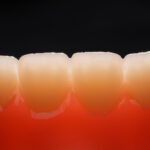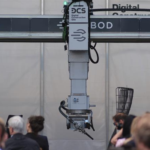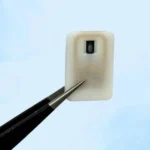The 3DET (3D printed detector) collaboration at CERN, in partnership with ETH Zurich, the School of Management and Engineering Vaud, and the Institute for Scintillation Materials in Ukraine, has reached a significant milestone. The collaboration successfully developed a completely 3D printed monolithic detector, marking a major leap forward in the production and assembly of plastic scintillator detectors.
Plastic scintillator detectors play a crucial role in high-energy physics experiments due to their cost-effectiveness and ability to facilitate sub-nanosecond particle tracking and calorimetry. The challenge lies in creating the next generation of detectors, such as the two-tonne “super fine-granularity detector” at the T2K neutrino experiment in Japan, which features two million 1 × 1 × 1 cm3 scintillating cubes arranged in a complex structure. Achieving larger active volumes and finer 3D segmentation requires technological innovation in production and assembly processes.

The 3DET collaboration addressed these challenges by leveraging additive-manufacturing methods to create plastic scintillator detectors without the need for post-processing and machining. This streamlined approach significantly simplifies the assembly process, allowing for the efficient scaling up of intricate workflows and achieving more precise segmentation.
The monolithic detector comprises active plastic scintillator cubes, a reflective coating ensuring optical independence, and strategically placed holes for inserting wavelength-shifting optical fibers throughout the structure. Notably, this 3D printed prototype eliminates the necessity for additional production steps, enabling the immediate instrumentation of fibers, photocounters, and readout electronics right after the printing process. This results in a fully functional particle-physics detector.
“This achievement represents a substantial advance in facilitating the creation of intricate, monolithic geometries in just one step. Moreover, it demonstrates that upscaling to larger volumes should be easy, cheaper and may be produced fast,” said authors Davide Sgalaberna and Tim Weber of ETH Zurich.
“Applications that can profit from sub-ns particle tracking and calorimetry in large volumes will be massive neutrino detectors, hadronic and electromagnetic calorimeters or high-efficiency neutron detectors.”
The 3DET team has demonstrated the capabilities of their creation by imaging cosmic rays with a scintillation light yield and cube-to-cube optical separation equivalent to state-of-the-art detectors. The accuracy of their results was further validated through beam tests conducted at the T9 area. This achievement opens up new possibilities in the field of high-energy physics, showcasing the potential of 3D printing to revolutionize the production of advanced detectors for experimental research.
Source: cerncourier.com
Come and let us know your thoughts on our Facebook, X, and LinkedIn pages, and don’t forget to sign up for our weekly additive manufacturing newsletter to get all the latest stories delivered right to your inbox.









